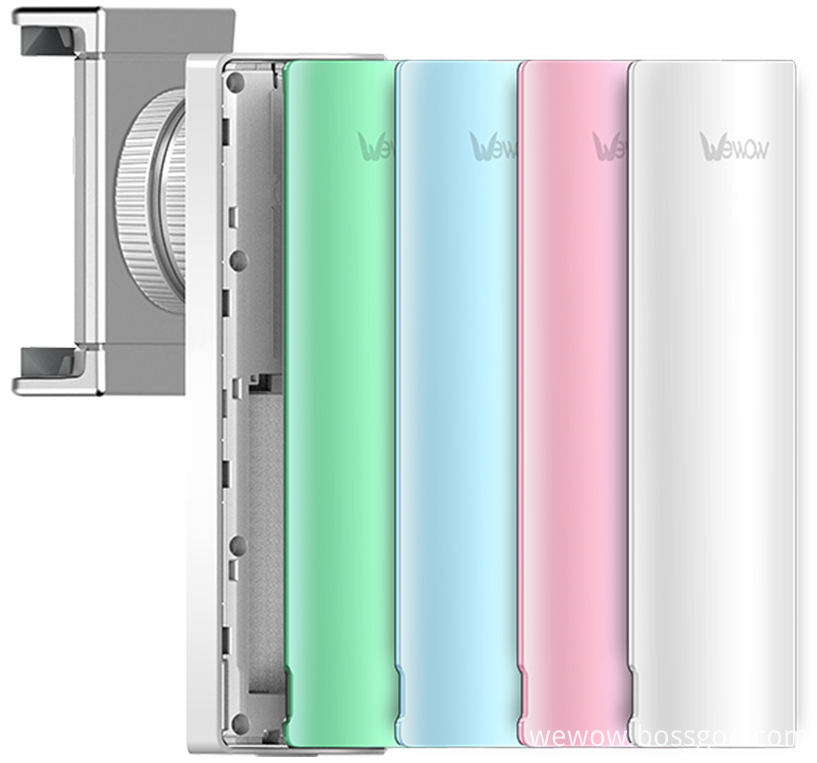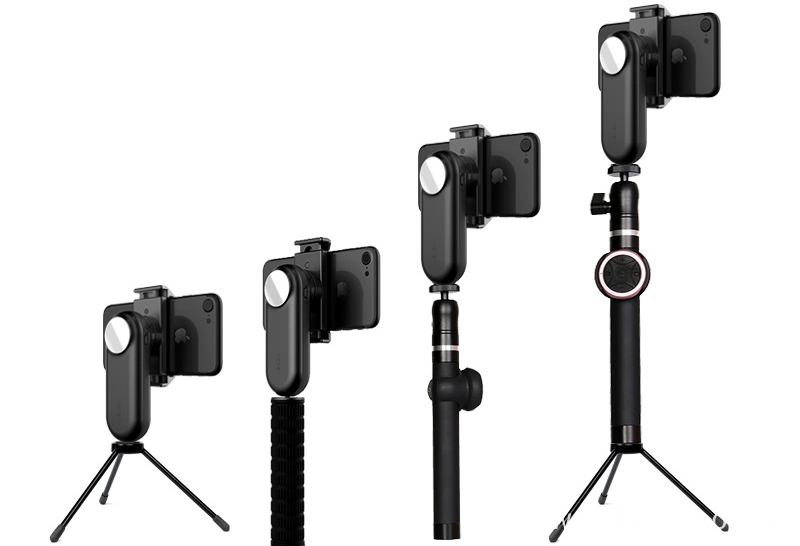This article describes the architecture of Wolfson Microelectronics' latest generation audio digital-to-analog converter (DAC), focusing on the design of new device families that provide high voltage line driver output in consumer electronics applications.
Fundamental
Incremental accumulation modulators are often described in complex terms, using mathematical formulas, state tables, and theoretical models. Although all of this is necessary to understand the complexity of incremental accumulation modulation, the key to the purpose of this article is to understand the benefits of the SDM architecture and their application in audio converter ICs.
The two basic principles of incremental accumulation modulation are:
â— Oversampling
The sampling process produces quantization errors; the difference between the sampling level at the output and the desired output level. The energy of the quantization noise depends on the resolution of the audio converter and is spread over the bandwidth of the sampling frequency.
The Nyquist sampling principle shows that in order to accurately convert a signal from the analog to the digital domain, the signal must be sampled at twice the frequency of the highest frequency component of the signal. The highest frequency component is also called the Nyquist frequency. For audio, the typical bandwidth is between 20Hz and 20KHz, and the sampling frequency tends to be 44.1KHz (for CD audio) to 192kHz (DVD audio).
A sampling frequency lower than twice the Nyquist frequency will cause aliasing, and the input signal will fold back to the audio frequency band with an image around the Nyquist frequency.
In SDM converters, data converters operate at frequencies much higher than twice the Nyquist frequency, usually 128 to 768 times the lowest sampling frequency.
The oversampling process diffuses the quantization noise over a wider bandwidth than other data conversion methods, so there is very little quantization noise in the audio frequency band.
â— Noise shaping
In addition to spreading quantization noise over a wide spectrum, SDM is also used as a low-pass filter to filter the input signal. A high-pass filter filters the quantization noise, pushing the quantization noise out of the audio band. For ADCs, this allows the converter to use fewer bits without reducing SNR.
The requirement of oversampling means that the incremental accumulation modulator design is best suited for low bandwidth applications, such as audio data conversion, such as audio data conversion.
Design considerations
SDM-based architectures are complex, and designers have many options to optimize their designs for specific applications. The key tradeoffs are order, resolution, and architectural topology.
The order of the incremental accumulation modulator:
The first-order and second-order SDMs are inherently stable and generate large in-band noise, but have very low out-of-band noise. Higher-order SDMs can be conditionally stable and generate greater out-of-band noise, so they are sensitive to clock jitter.
The latest DAC architecture of Wolfson Microelectronics is based on a second-order incremental accumulation modem, which drives the clock at a high speed to reduce in-band noise and is therefore insensitive to clock jitter.
â— DAC resolution
The increase in DAC resolution reduces the quantization error, thus improving the theoretical signal-to-noise ratio (SNR) of the DAC.
For each bit resolution, the theoretical maximum SNR is approximately 6xn, where n is the number of bits. Therefore, the theoretical maximum SNR of a 24-bit audio DAC is close to 144dB.
Wolfson ’s DAC design is based on a 5-bit or 6-bit converter, combined with the SDM architecture to provide a resolution of up to 24 bits.
For different noise sources, including analog and digital noise, the SNR cannot reach the theoretical maximum of -144dB. However, because of improved design methods, Wolfson's high-performance DAC of each generation strives to approach the theoretical maximum.
Performance, stability, size and cost are directly affected by the above design issues.
â— DAC architecture
It can be considered that a typical incremental accumulation DAC contains the following elements: insertion filter—increasing the effective bit rate, allowing the DAC to oversample the input signal.
Wolfson uses a three-stage cascade integral comb filter (CIC) to attenuate the image from 8fs to 128fs. This method greatly attenuates frequency components that are several times the input sampling rate, improving the DAC's tolerance to clock jitter.
Incremental accumulation modulator-has the advantages of oversampling and noise shaping, which is critical for the high-performance audio data conversion described above.
Digital-to-analog converter—Converts SDM output to analog output. The switched capacitor method is used to precisely control the output voltage, and the noise introduced by the noise shaper is filtered to further improve immunity to clock jitter.
The patented method adopted by Wolfson includes a unique dynamic cell matching (DEM) scheme, which can minimize the capacitance mismatch error, compared with other alternative schemes, greatly improving the DAC linearity.
Low-pass filter—removes any remaining high-frequency components to achieve the most accurate reproduction of audio signals.
In fact, these four units are not completely isolated modules, and some functions are handled between these modules.
â— Output level requirements
The audio DAC usually outputs a full-scale signal. Under the condition of 5V power supply, the level is between 1.0 Vrms and 1.1 Vrms. When the power supply voltage is 3.3 V, it is 0.66 Vrms and 0.72 Vrms. In mainstream applications, the output of the DAC is fed into an active circuit, which has two purposes:
Low-pass filter-it can remove the high frequency noise inherent in the conversion process.
Amplifier-The output level is usually increased to 2Vrms, which requires a high-voltage power rail (usually between 9V ~ 12V) to power the active devices of external circuits. There are several reasons for its implementation, including meeting industry standards, providing noise tolerance, and meeting de facto standards for interfacing with audio equipment.
Why is 2Vrms?
Various formal and de facto industry standards have been developed. These standards require the use of 2Vrms line levels between consumer audio equipment (such as DVD recorders) and televisions. However, there is a common misconception that the signal level must be 2Vrms plus or minus a specified tolerance. In fact, in most standard industry tests, audio equipment, such as DVD recorders, must be able to accept signal levels up to 2Vrms plus a tolerance. Devices such as DVD players must have an output level that cannot exceed 2Vrms plus tolerance. There is no minimum specification for the signal level, although to meet certain industry standards, the output signal level must be around 1Vrms.
In short, the audio transmitter must output a signal level between 1Vrms and 2Vrms, and the audio receiver must be able to receive input signals up to 2Vrms. Because the power supply of most consumer audio ICs is 5V or 3.3V, it is impossible to generate 2Vrms from a 5V power supply. Designers have to use external active devices to generate the required output level from the DAC circuit.
WM8501 and WM8522
Wolfson Microelectronics has considered these line level requirements in the design and designed a new series of audio devices. The output analog audio signals of these devices are 1.7Vrms line level and the power supply is 5V. This meets industry standards, eliminating the need for high-voltage power rails to boost the DAC output. This high voltage rail is still required in certain applications, such as SCART signal processing. But this is not required in all applications. Eliminating the 12V power rail and related power traces, active components of the DAC output filter and related PCB space, has realized a lot of cost savings and reduced circuit area.
Using a passive filter at the DAC output can get the same high-quality audio output. Compared with the active filter required to provide the necessary gain to amplify 1.0Vrms to 2.0Vrms, the complexity and cost are greatly reduced.
The WM8501 is a stereo audio DAC with a line driver output of 1.7Vrms. WM8522 is a 6-channel version of the same product, designed for multi-channel audio systems. Both chips can produce audio signals with a dynamic range greater than 100dB, which greatly exceeds any industry standard requirements, and therefore can meet the de facto standards set by consumer audio equipment critics.
Conclusion
Facts have shown that the design of incremental accumulation modulators is constantly evolving to meet market demands for performance and cost. In addition to improving the core architecture of their ICs, Wolfson Microelectronics is constantly discovering how to provide new ways for customers to provide more benefits in performance, cost savings, and simplified end product design.
Traditionally, stabilizer is heavy and too big to take. Fashion stabilizer can solve all these problems. It`s small and light.

Fashion gimbal stabilizer are designed as pocket size, portable and easy to take. You can carry it as easy as smartphone!

Wewow focusing on handheld stabilizer is a technology company which does R & D independently. With Wenpod series product released, the company achieved the industry's praise and quickly became the leader of the smart stabilizer industry.
Our service
1. Reply to you within 24 hours.
2. Already sample: within 1-2days.
3. Shipping date: within 24 hours once get the payment.
4. 12 months warranty.
5. After-sales service, solve within 3 working dates.
If you have any questions, please contact with us directly.
Wewow appreciates domestic and international business relationship!
Fashion Stabilizer,Fashion Stabilize Regulator,Professional Fashion Stabilizer,Voltage Stabilizer
GUANGZHOU WEWOW ELECTRONIC CO., LTD. , https://www.stabilizers.pl